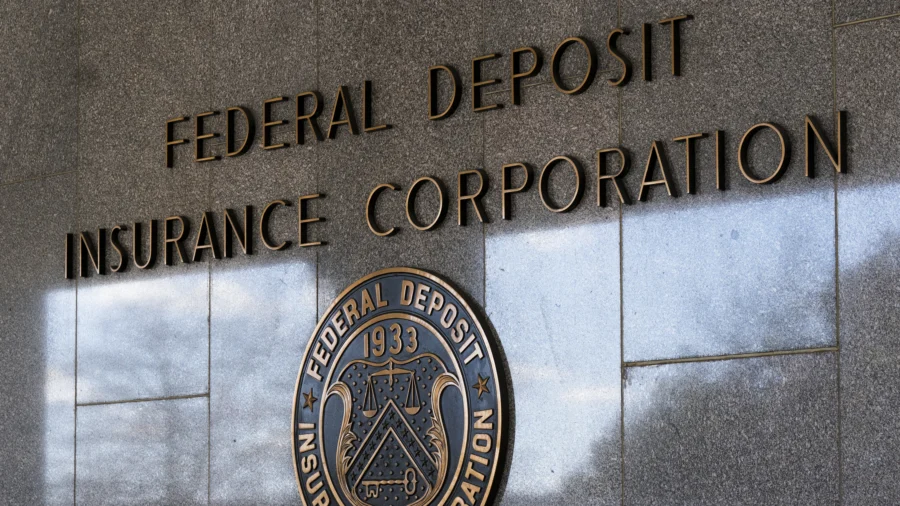The First National Bank of Lindsay was forced to cease operations after the Office of the Comptroller of the Currency (OCC) found the institution to be in a perilous financial position.
Oklahoma-based First National Bank was shut down on Friday after the OCC identified “false and deceptive bank records and other information suggesting fraud that revealed depletion of the bank’s capital,” the agency said in an Oct. 18 statement. OCC is a bureau under the Treasury tasked with regulating and supervising all national banks to ensure they operate securely.
The OCC found the financial institution to be in an “unsafe or unsound condition to transact business and that the bank’s assets were less than its obligations to its creditors and others.”
The agency appointed the Federal Deposit Insurance Corporation (FDIC) as the receiver for the bank, which then entered into a purchase agreement with the First Bank & Trust Co. to take over the troubled institution, FDIC said in an Oct. 18 statement.
“No advance notice is given to the public when a financial institution is closed,” FDIC previously stated.
As a result, the only office of First National Bank of Lindsay will reopen as a branch of First Bank & Trust Co. on Oct. 21. Depositors of First National will automatically become depositors of First Bank.
Services such as bill payments, online banking, debit and credit card transactions, check processing, direct deposits including social security and disability income, overdraft lines of credit, and safety deposit boxes will still be available.
Deposits with First National that have been taken over by First Bank will continue to be insured by the FDIC.
“All customers of The First National Bank of Lindsay will have access to their insured deposits,” the FDIC said.
“In addition, based on the estimated recoveries of the failed bank assets, the FDIC will make 50 percent of uninsured funds available to those depositors on Monday, October 21, 2024. This amount could increase as the FDIC sells the assets of the failed bank.”
The FDIC asked customers with accounts of more than $250,000 to contact the agency at 1-866-314-1744 for an appointment to discuss their deposits.
First National reported total assets worth $107.8 million and deposits valued at $97.5 million as of June 30. Roughly $7.1 million in deposits exceeded FDIC insurance limits.
First National Bank of Lindsay is the second bank to fail in the United States this year, following the Republic First Bank in Philadelphia, according to the FDIC.
Republic First Bank collapsed in late April, with the FDIC arranging for the entity to be taken over by Fulton Financial. Before its collapse, the bank had about $6 billion in assets and $4 billion in deposits as of the end of January.
The two banking collapses this year put at risk more than $6 billion in assets. Last year, there were five failures involving more than $548 billion worth of assets. In terms of assets involved, 2023 was the biggest year for bank failures since 2001, even beating the 2008 financial crisis.
The current U.S. banking sector turmoil began last year when Silicon Valley Bank, the 16th largest bank in the country, collapsed in March 2023. The implosion was the result of depositors rushing to withdraw their funds after the institution suffered big losses in its bond portfolio.
SVB’s failure was followed by the implosion of Signature Bank and First Republic Bank. The crashes triggered concerns about the stability of the U.S. banking sector.
A June 20 report from Klaros Group that analyzed the state of the U.S. banking industry for the first quarter said the sector “continues to be under the same stresses that have triggered recent bank failures: higher rates and looming CRE credit issues.”
These pressures are unevenly distributed, “with some banks quite well positioned and others under greater stress,” Klaros analysts found. “While many banks are impacted by these pressures, and the need for more capital and consolidation is clear, relatively few banks currently appear to be at risk of failure.”
From The Epoch Times

